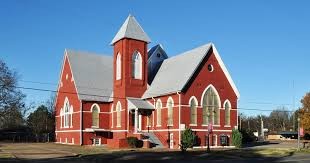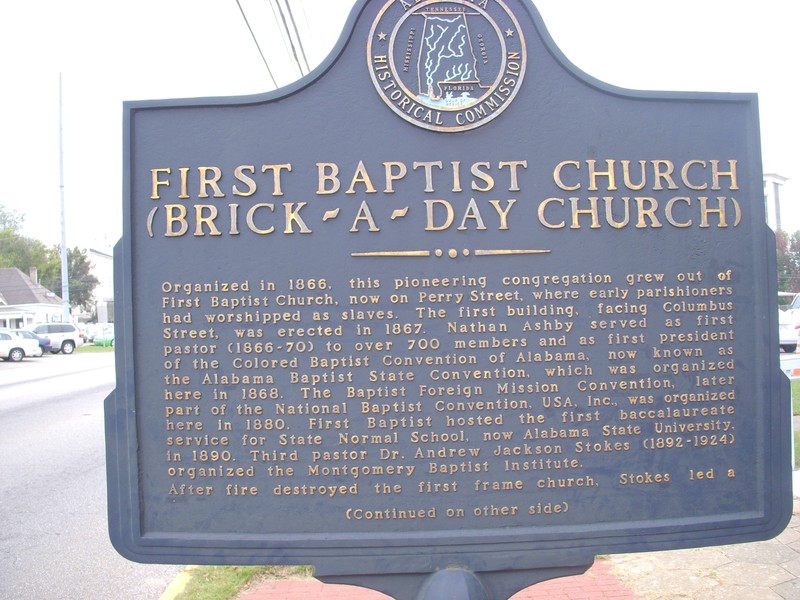First Baptist Church
Introduction
Text-to-speech Audio
Images
First Baptist Church was used as a meeting place for civil rights leaders and organizations when they planned events and campaigns.

Members of the SCLC and SNCC used First Baptist Church and the Brown Chapel AME Church to plan the Selma to Montgomery marches.

Backstory and Context
Text-to-speech Audio
In the early and mid-1960s First Baptist church, although invested in the Civil Rights Movement since the 1950s, became a significant location for the formation of civil rights campaigns. The First Baptist Church was a gathering place for civil rights meetings that led to such events as the Montgomery Bus Boycott from 1955-1956 and the Freedom rides in May 1961. In addition, it hosted meetings for SNCC, and it was one of the locations activists used to organize marches that eventually lead to the passing of the Voting Rights Act of 1965. It was here that the Selma campaign, known as the Selma to Montgomery March, began.
Despite being outlawed by the Governor George Wallace, nearly 600 African American protesters gathered to march to Montgomery. Seeing that the state outlawed protests, protesters were met with opposition from the Alabama State Police. Just six blocks from where the march began, mounted troops were waiting for the protesters. When met by the troops, the protesters stood their ground, even after being advised to disperse. When protesters refused to leave, they were met with billy clubs, tear gas, bullwhips, and rubber tubing wrapped in barbed wire, courtesy of Sheriff Jim Clark’s “deputized posse.” As all this occurred, white onlookers cheered.
The march was led by the leaders of the Southern Christian Leadership Conference (SCLC) and SNCC. The leaders of the first march were Hosea Williams and John Lewis respectively. In the midst of the commotion John Lewis’ skull was fractured as he fell to the ground along with other protesters who fell and screamed as they were met with violence. After this march, thousands of people came to Selma to participate in the other two marches, the third of which ended in a victory for the marchers.For its role in the ending of segregation, First Baptist Church was made a historical landmark in the state of Alabama in 2000.
Sources
McCullen, Logan. Senator Sam Ervin and the 1964 Civil Rights Act. unc.edu. Accessed August 01, 2017. http://ervin062.web.unc.edu/reactions-to-civil-rights/using-religion-to-pose-and-defend-an-argument/.
First Baptist Church. Wikipedia. March 26, 2017. Accessed August 01, 2017. https://en.wikipedia.org/wiki/First_Baptist_Church_(Montgomery,_Alabama).
